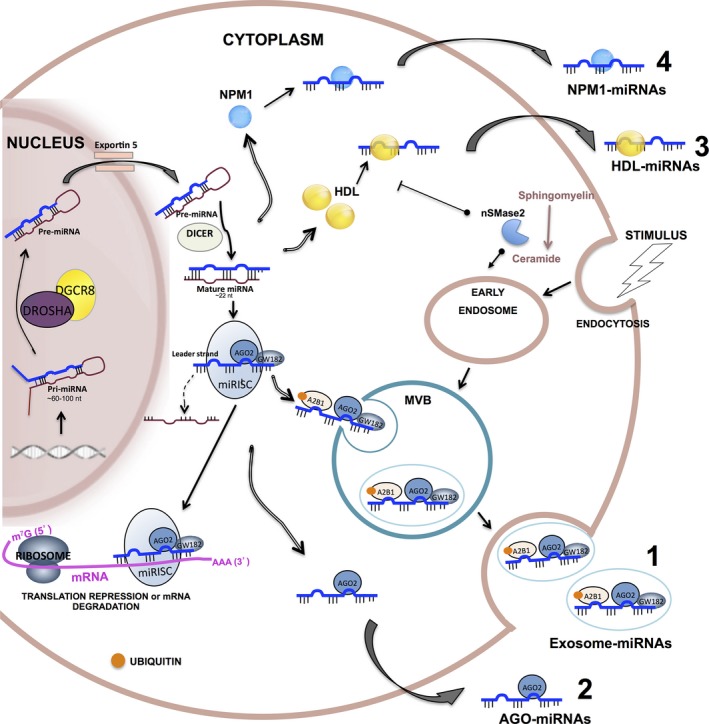Figure 2.

Biogenesis and proposed release mechanisms of free‐cell miRNAs. miRNA precursors (pri‐miRNAs) are transcribed in the nucleus and processed by the Drosha complex to generate pre‐miRNAs. Pre‐miRNAs are exported to the cytoplasm via exportin‐5 and are excised by DICER into a mature form of double‐stranded RNAs that are ~22 nucleotides long. One strand is loaded into the RISC along with Argonaut 2 (AGO2) and GW182 to form the miRISC. There, miRNAs can bind to complementary sequences on target mRNAs to repress translation or trigger mRNA cleavage. miRNAs can also be transported to the extracellular environment via four proposed mechanisms. (1) Encapsulated within exosomes: miRNAs are sorted into multivesicular bodies (MVBs), which are derived from early endosomes, through a mechanism that requires ceramide production on the cytosolic side by neutral sphingomyelinase 2 (nSMase2), the endosomal sorting complex required for transport (ESCRT) machinery and the sumoylated hnRNPA2B1 protein, which specifically binds mature miRNAs and controls their loading into MVBs. MVBs fuse with the plasma membrane and release exosomes into the extracellular medium. MVBs are enriched with GW182 and AGO2, the two main components of the RISC, which could be involved in the function of miRNAs. (2) Complexed with Argonaute2 protein (Ago2): miRNAs can be stably exported when they are associated with Ago2, a major component of the RISC. (3) Bound to high‐density lipoprotein (HDL): miRNA can also be stably exported in conjunction with HDL, via a mechanism that is repressed by nSMase2. (4) Bound to the RNA‐binding protein nucleophosmin (NPM1): NPM1 was shown to bind and protect exosome‐free miRNAs from RNase activity in blood circulation.
